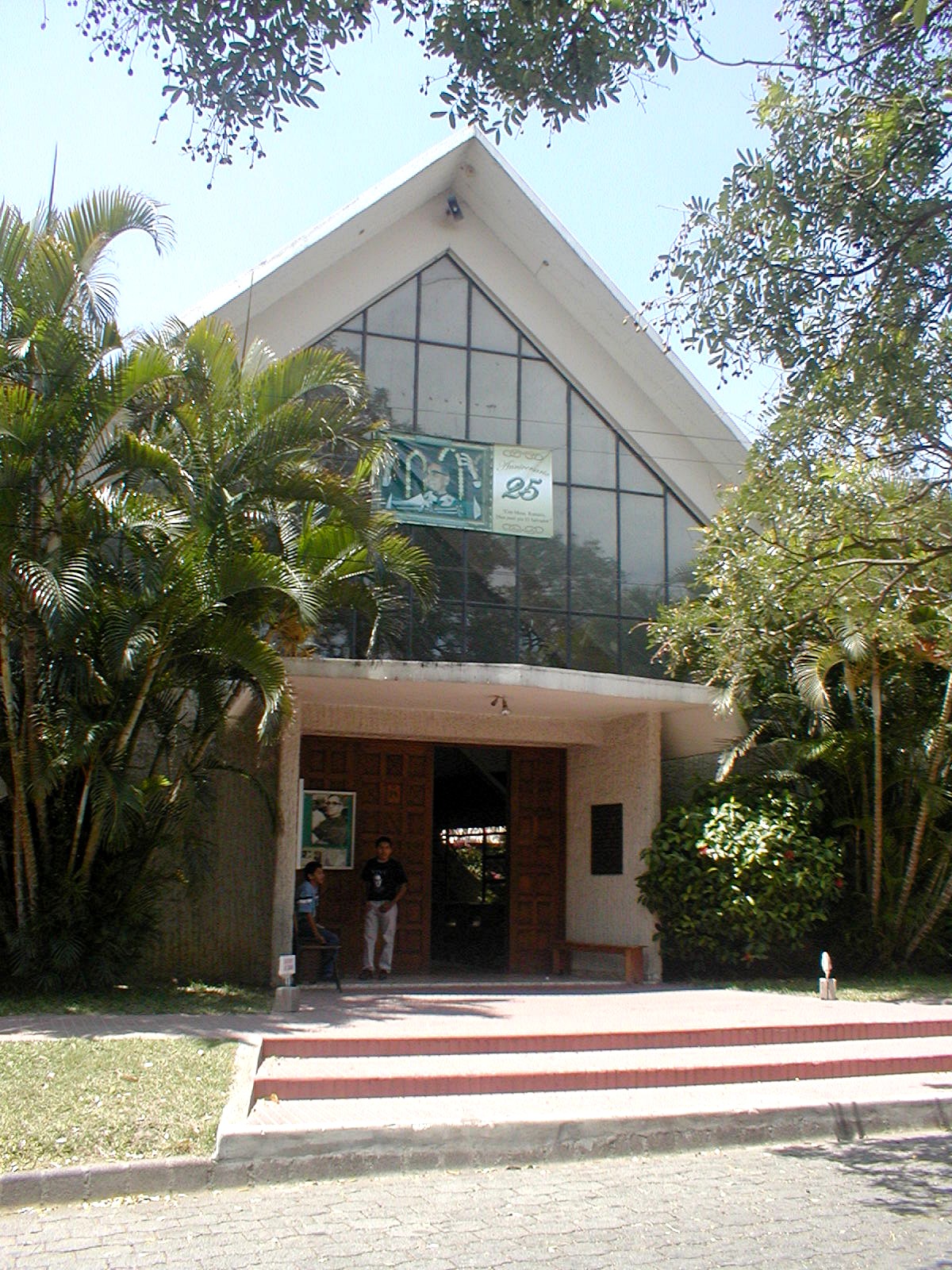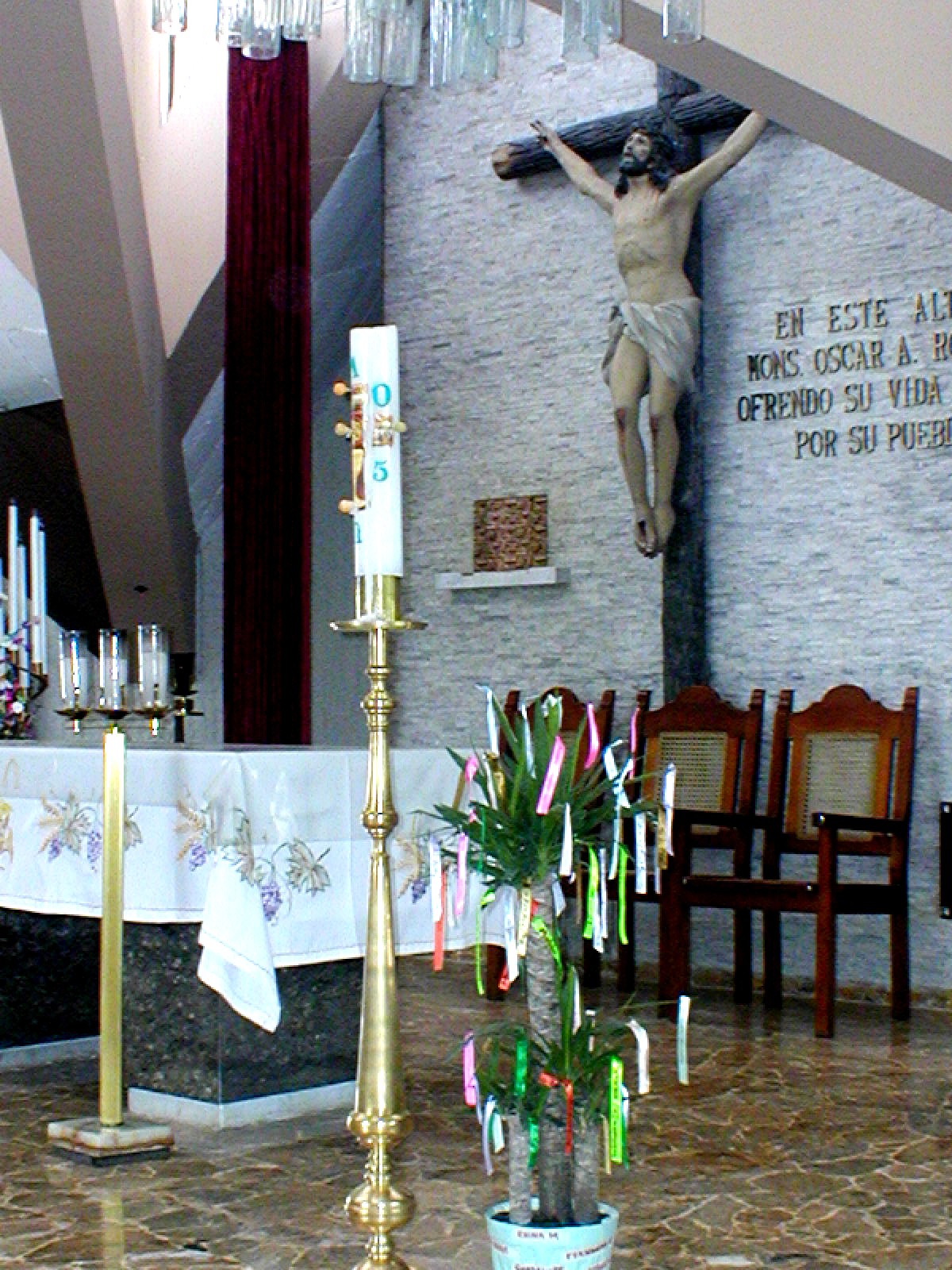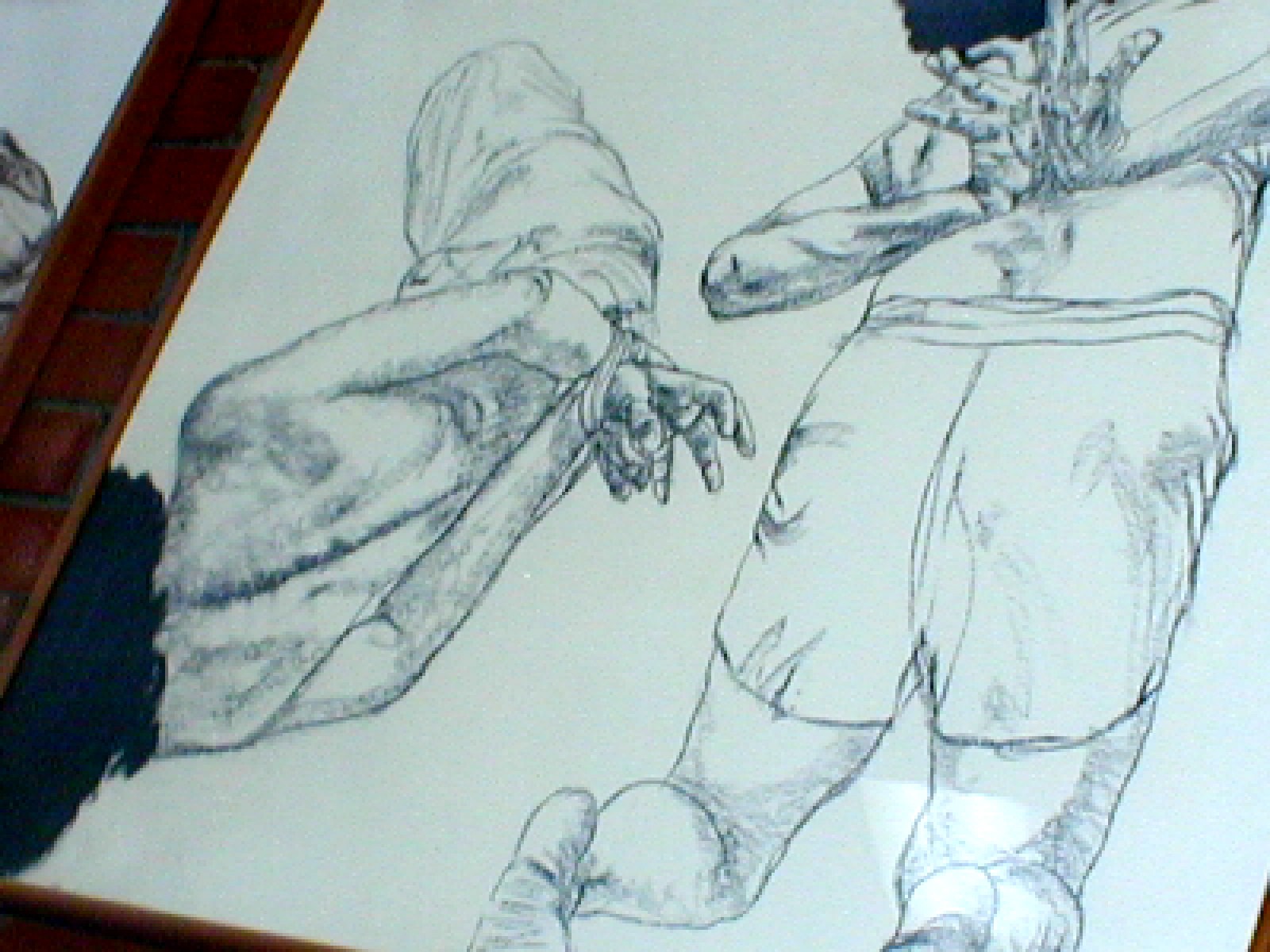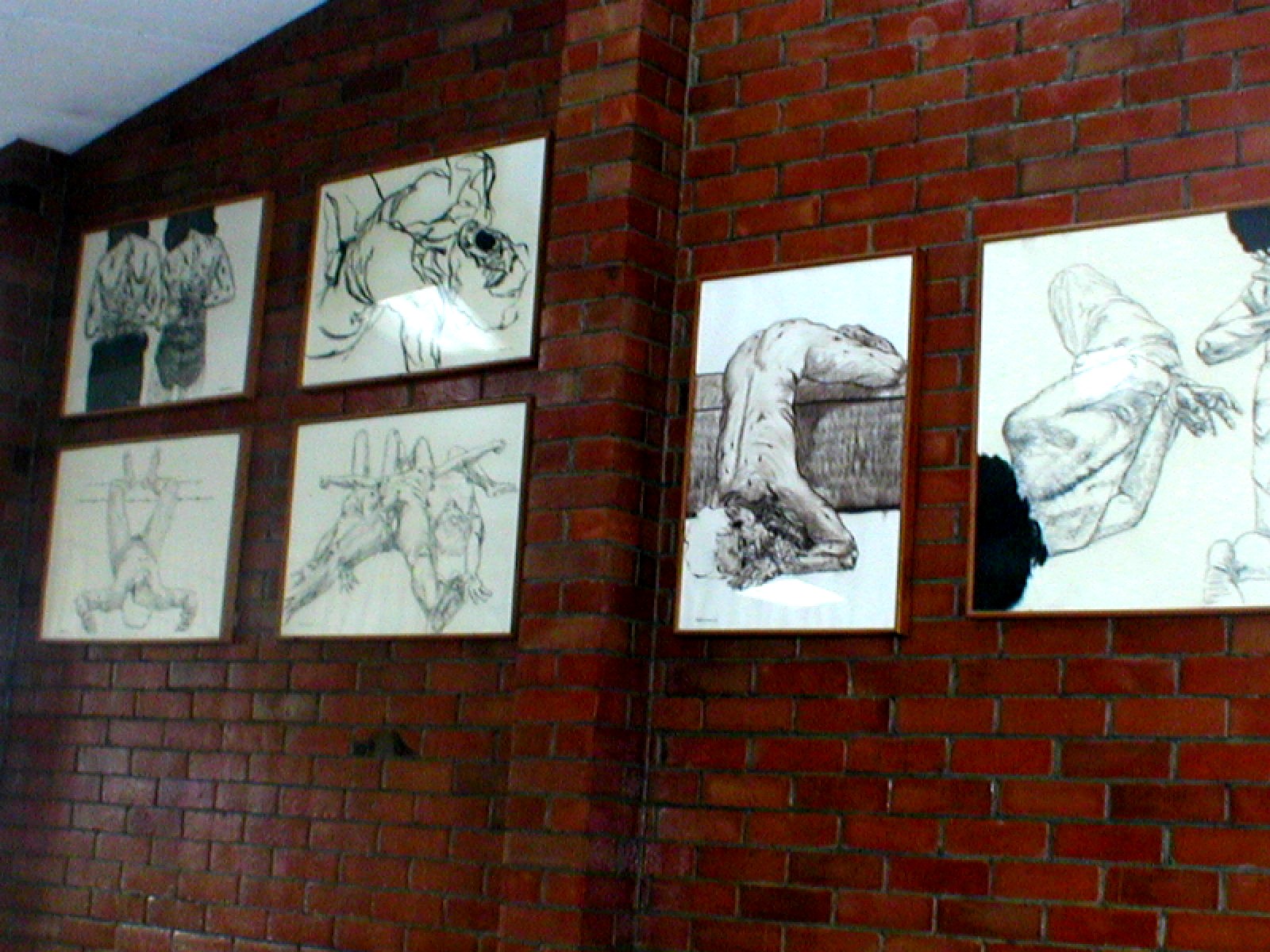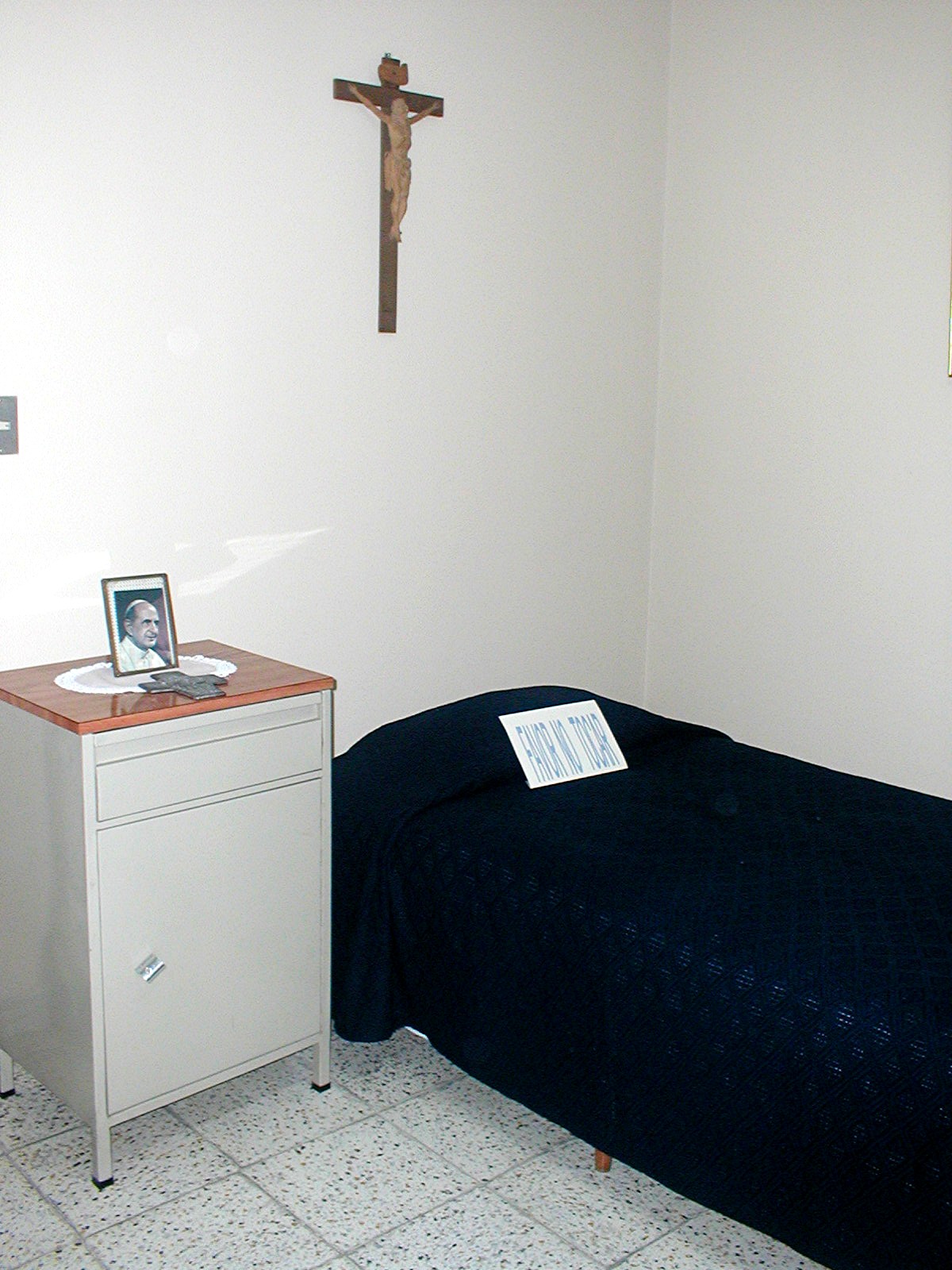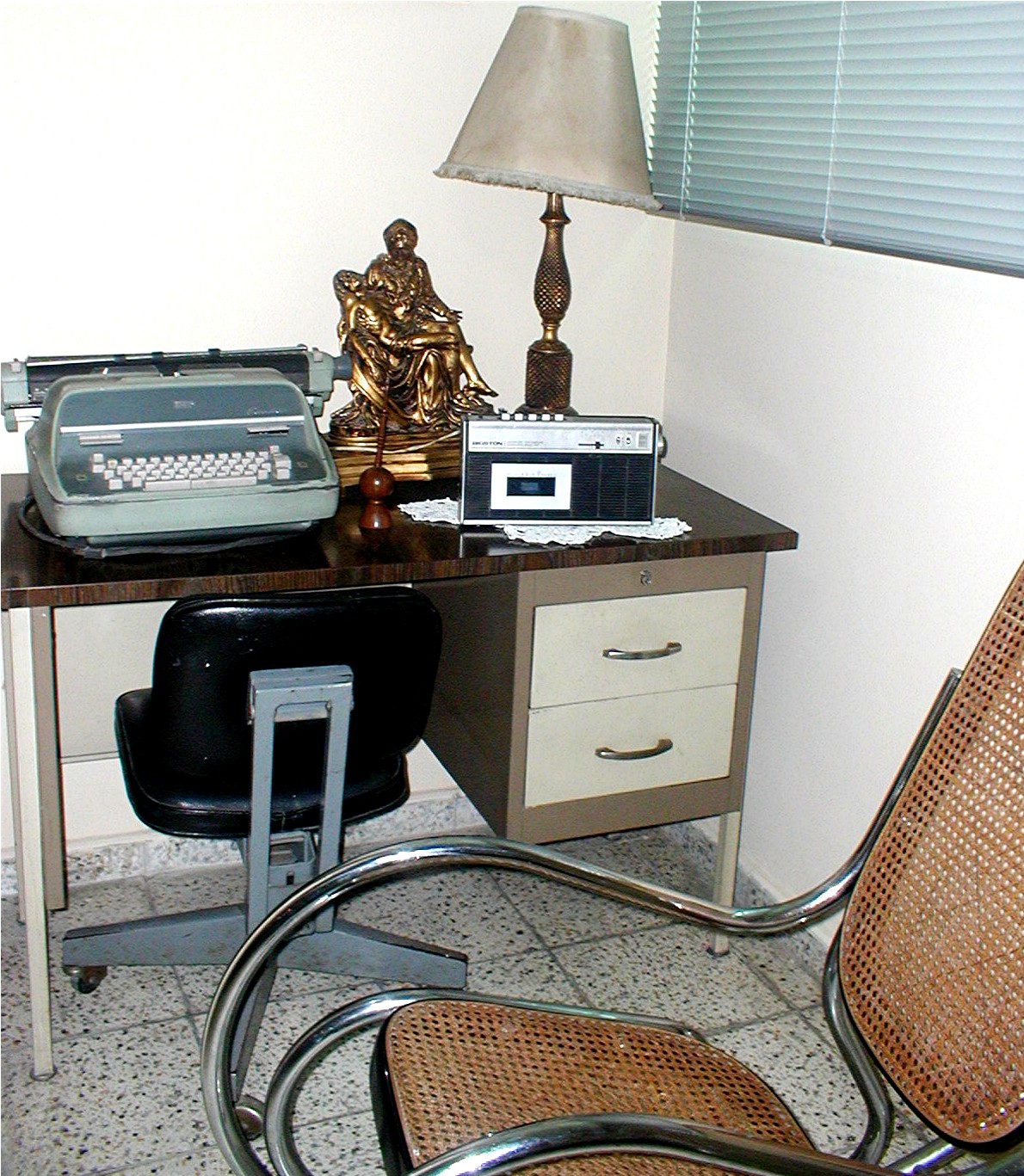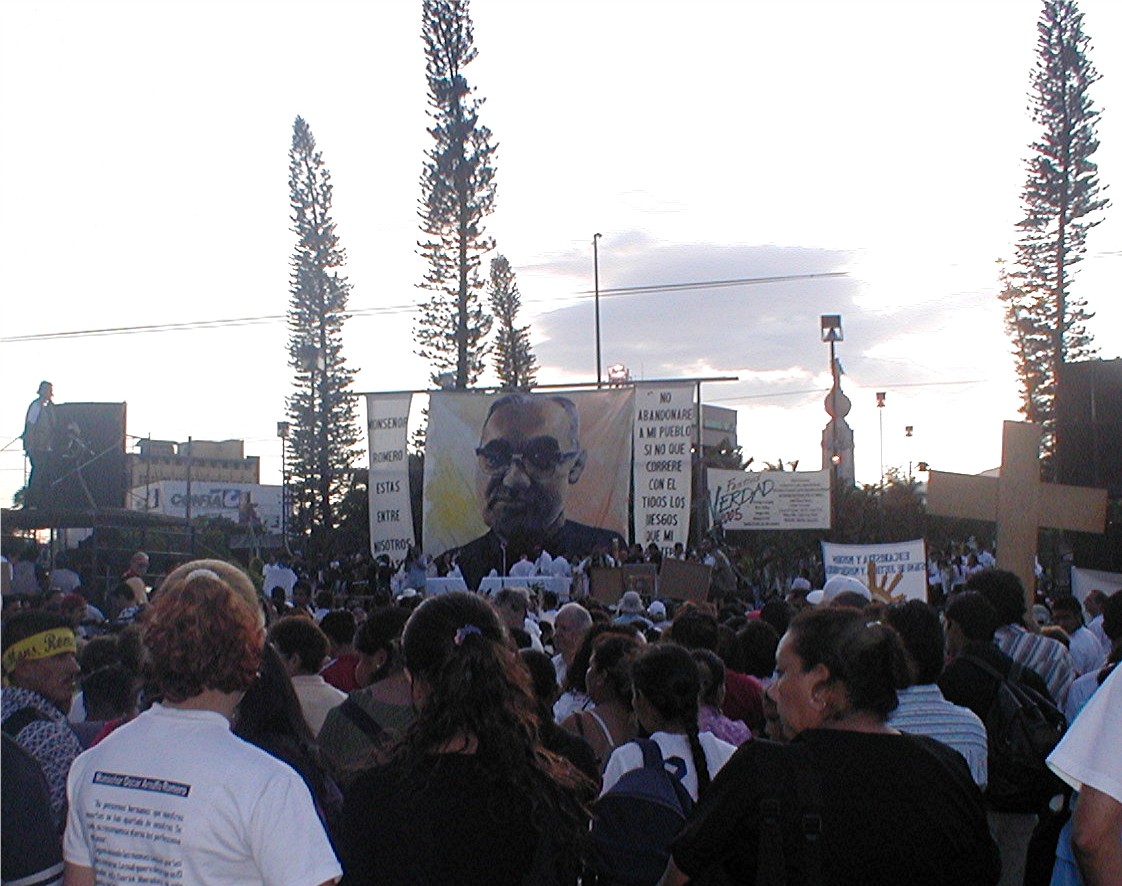Romero’s tiny house demonstrates that to so many, Romero is already a saint, even though he isn’t part of any beatification process in the Vatican, and likely won’t be a candidate anytime soon. Rebel archbishops are rarely viewed as heroes in a top-down organization like the Roman Catholic Church. The doors on his bedroom closet have been replaced with Plexiglas to display the archbishop’s clothes, and ditto the bathroom; his shaving kit remains displayed on the sink. On his desk in the corner, there’s an old typewriter and a radio. Romero reminds me very much of my grandfather, who died of a heart attack just a few months after the archbishop. They looked remarkably alike, and I feel a little stab of nostalgia when I see the archbishop’s glasses sitting on a table, waiting for him. His datebook stands open behind glass in one case. It’s open to the week of his death, full of appointments for the rest of the days of the week. They remind me of the days after my own grandfather’s sudden death, when so many little things were a reminder of the life he anticipated living. It was the same for Romero. He was an ordinary man and an ordinary saint who didn’t want to die, but who knew that the risks he was taking could only lead to one possible outcome.
On March 26, 1980, a masked gunman got out of a car, walked into the church (above) where Romero was celebrating Communion, and shot him in the head. The words on the wall behind the altar (left) say "In this place is where Monsignor Oscar Romero gave his life for his people."
